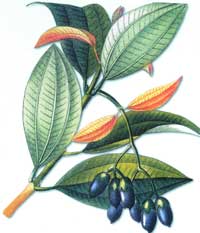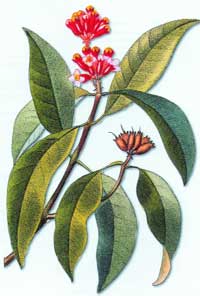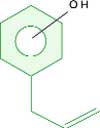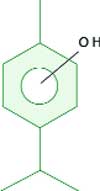Positive Health Online
Your Country

Antiviral and Antimicrobial Properties of Essential Oils
by Dominique Baudoux(more info)
listed in infections and inflammation, originally published in issue 55 - August 2000
During the 1960s, Dr Jean Valnet gave rise to the rebirth of aromatherapy, which split up into several schools, allowing thousands of doctors to get familiar with an anti-infectious technique not acknowledged by medical schools.
Eager to meet their colleagues' demands, pharmacists and some biology labs that practised aromatograms joined with practitioners, creating a unique medical-pharmaceutical dynamic. Encouraged by hundreds of thousands of patients, a wide-ranging movement was born.
France has been at the forefront of aromatherapy practice in general, and the anti-infectious use of essential oils in particular. Pharmacists eagerly display the term 'Aromatherapie' on their storefront, which would have been inconceivable in English-speaking countries, where the term 'Aromatherapy' had completely different connotations.
Anti-Infectious Properties
Antibacterial
This is the most widely studied area of essential oils; this property is the only one that is really well-known and used regularly. In fact, many people associate 'aromatherapy' with 'anti infectious therapy'.
The capacity of essential oils to neutralize germs is now irrefutable. Experimental studies were undertaken in France by Chamberland as early as 1887.5 In I888, Cadeac and Meunier published the results of their own research (Annales de l'Institut Pasteur).3 Many in-vitro confirmations were performed by pharmacists and doctors; results were conclusive. In his book, Antiseptiques Essentiels, published in 1938, René-Maurice Gattefosse described the already considerable advancement of the research.
Soon, though, the blazing success of the fledgling antibiotherapy eclipsed these discoveries, proven though they were.
Here and there, isolated groups and researchers remained 'loyal' to essential oils and made sure previous works were not forgotten.
During the 1960s, Dr Jean Valnet gave rise to the rebirth of aromatherapy, which split up into several schools, allowing thousands of doctors to get familiar with an anti-infectious technique not acknowledged by medical schools. Eager to meet their colleagues' demands, pharmacists and some biology labs that practised aromatograms joined with practitioners, creating a unique medical-pharmaceutical dynamic. Encouraged by hundreds of thousands of patients, a wide-ranging movement was born.
France has been at the forefront of aromatherapy practice in general, and the anti-infectious use of essential oils in particular. Pharmacists eagerly display the term 'Aromatherapie' on their storefront, which would have been inconceivable in English-speaking countries, where the term 'Aromatherapy' had completely different connotations.
Thanks to the aromatogram, aromatherapy has the means to fully exploit the anti-infectious properties of essential oils based on serious criteria.
Knowledge of the antibacterial components of essential oils is of prime importance. For example, in the essential oil of Satureja montana, carvacrol is the active molecule; paracymene, usually present in this essential oil, does not possess anti-infectious properties.
It is an obvious necessity for the practitioner to have a clear, orderly idea of the most active molecules.
Molecules with the highest anti-bacterial coefficient are: carvacrol, thymol and eugenol; all three are phenols. Australol and gaiacol are also part of this group, but essential oils that contain them are not as active on this front.
Not a phenol (but related, with a benzenic core), cinnamic aldehyde has an anti-infectious activity comparable to phenols.
Thanks to these four molecules, any aromatherapy-savvy practitioner will be able to master most common infections.
Alcohols with ten carbon atoms (or monoterpenols) come immediately after: geraniol, linalool, thujanol and myrcenol, terpineol, menthol and piperitol are the most well-known. Reliable, broad-spectrum molecules, they are useful in numerous cases of bacterial infections.
Aldehydes are also somewhat antibacterial; the most widely used are neral and geranial (citrals), citronnellal and cuminal.
Ketones are interesting for the treatment of mucupurulent infectious states (usually a strictly indirect action): verbenone, thujone, borneone (camphor), pinocamphone, cryptone, fenchone, menthone, piperitone and carvone.
The antibacterial action of ethers is certain, but irregular; only an aromatogram can predict their use in a specific case; estragole and anethole are this group's most representative molecules. Oxides are mildly anti-infectious. Phtalids (such as celery seed) are strongly antibacterial. Finally, terpenes may prove interesting, but are mostly diffused into the air (atmospheric antiseptic agents). Other molecular groups have no antibacterial effects.
Of course, adequate strategies are necessary to maximize these substance.
According to Molowan, the antiseptic power of essential oils is generally proportional to their liposolubility. [2],[3],[5],[7],[9],[10],[11],[14],[19]
Anti-Fungal
Fungal infections are a hot topic today, due to the overuse and abuse of antibiotics by most members of the medical profession; as we all know, antibiotics are first and foremost microscopic fungi.
The molecular groups with the strongest antibacterial action are also active on fungi. However, treatment must be over a longer period.
Fundamental studies have also revealed the anti-fungal activity of alcohols and sesquiterpenic lactones. [1],[7],[8],[12],[13],[16],[17]
Antiviral
The mad parasites of any and all forms of life, viruses give rise to pro-teiform pathologies, some of which medical science can do nothing to cure. Classic responses to these infections are very limited, so essential oils are a godsend in treating viral problems, from the most common to the most fearsome.
Molecules from many chemical families have shown an in-vitro antiviral activity, among them monoterpenols and monoterpenals.
The cineole – monoterpenol synergy is used to treat viral pathologies of the respiratory tract (widely seen in temperate climes). This synergy can be found in many essential oils that come from trees of the Myrteceae family; these have been known forever for their interest in the treatment of pulmonary diseases.
Another couple, linalool oxide – linalool (Hissopus off. var. decumbens) is also interesting for viral pathologies of the lower respiratory tract.
Ketones, and especially rare cryptone, have shown an interesting capacity to fight naked viruses.
Aldehydes, whether used internally or in the atmosphere, are good complementary treatments for patients with viral infections. Ethers are useful in some specific clinical cases.
Generally, viruses are highly sensitive to aromatic molecules, and some severe viral pathologies may show a vast improvement following their use. A fact of the highest interest, unearthed during fundamental research and clinical experiments: normal cells of patients under aromatic treatment seem to acquire a special resistance to viral penetration.[1],[7],[8]
|
Some minimal phenol-inhibiting concentrations |
||
| Gram + bacteria | Gram – bacteria | Fungi |
| Staphylococcus aureus 0.125 | Escherichia coli 0.125 | Candida albicans 0.500 |
| Diplococcus pneumoniae 0.250 |
Klebsiella pneumoniae 0.125 | Aspergillus niger 0.250 |
| Micrococcus flavus 0.125 | Haemophilus influenzae 0.500 | Absidia glauca 0.500 |
| Streptococcus pyogenes 0.250 | ||
The Aromatogram[1],[8],[9],[12],[13]
This technique, which is performed in a clinical biology laboratory, is an in-vitro method of measuring the antibacterial power of chemotyped essential oils. There are different practical types of aromatogram: solid, liquid and gas.
To keep the procedure practical, the solid aromatogram is used in day-to-day operations, as it is simpler, more adaptable and the results are more easily reproducible. Samples taken from cavities or mucous membranes (sputum, stool, urine, mucus, pus, pap smear…) are prepared, then put in contact with various nutritive mediums (enriched agar) in Petri dishes. Being given optimal growth conditions, pathogenic germs develop rapidly in the nutritive medium.
Several series (6 to 8 per dish) of little disks of blotting paper saturated with the different essential oils to be tested are put over these microbial colonies. After a latency period at 37.5°C, the inhibition halo surrounding the disks is then measured. Each halo (light area) shows the destruction of the pathogenic germs and gives a clear indication of the antibacterial activity of the essential oils used.
Depending on the size of the inhibition halo, rating the chemotyped essential oils by their antimicrobial activity spectrum becomes easy.
- If the light area measures between 2 and 3 millimetres, then the essential oil (E.O.) has a good bactericidal action on the tested germs. It is given two stars (**).
- If the light area is more than 3 millimetres across, then the E.O. is very effective, and is given three stars (***) for its antimicrobial spectrum.
- If there is no light area, the E.O. has no activity on the analysed germ, and will not be retained for treatment.
About sixty chemotyped (CT) essential oils are tested on a wide range of germs being very different from one another.
Although the limits of the aromatogram are those of any in-vitro technique, it nevertheless represents an essential reference point, since it is identical to the technique used to measure the bactericidal activity of antibiotics, so the comparison is simple for any practitioner.
Biochemistry of Essential Oils with Anti-Infectious Properties
An important key to aromatherapy is the knowledge of the action of the aromatic molecules that make up chemotyped essential oils, sometimes by the hundreds.
|
Phenols6,7,13,14,17
Toxicity Therapeutic uses Phenols and their essential oils |
|
Terpenic alcohols (Terpenols)1,4,7,12
Specific properties Toxicity Therapeutic uses Terpenic alcohols and their essential oils |
|
Aromatic aldehydes7,8
Main properties Specific properties Toxicity Therapeutic uses Aromatic aldehydes and their essential oils |
Essential Oils with Antimicrobial and Antiviral Properties
Ravensara aromatica
The Lauraceae genus is important, both for its sheer number of species (2000-2500) and for its therapeutic properties. They are found mostly in the tropical areas of America and Asia.
Each part of these aromatic plants may contain essences; for example, with Ravensara, the bark and leaves produce two very different essential oil.
General Properties
The essential oil has the properties of its oxide (1,8 cineole) and its monoterpenic alcohols (terpineol alpha).
Exceptional antiviral, immunostimulant*****
Anti-infectious, antibacterial***
Neurotonic and psychic stimulant****
Muscle relaxant and antalgic**
Expectorant, anticatarrh***
Positizing***
Therapeutic Indications
Infections of the respiratory tract: bronchitis, rhinitis, sinusitis, rhinopharyngitis, whooping cough***
Influenza****, herpes, herpes zoster****
Hepatitis and viral enteritis***
Infectious mononucleosis***
Deep physical and moral fatigue***
Insomnia and stress***
Origanum compactum[15]
The Lamiaceae family is made up of over 3000 species of mostly medicinal and aromatic plants. They have a marked preference for the Mediterranean basin. Oregano likes free, open habitats with dry, rocky slopes and scrubs. This plant has amore rustic appearance than its sister, Origanum majorana (sweet marjoram), for which it is often mistaken.
General Properties
The essential oil has the properties of its phenols: carvacrol and thymol.
Powerful, broad-spectrum antibacterial****
Antiviral, immunostimulant**
Fungicide and mycobactericide***
Parasiticide****
Positizing**
General tonic and stimulant (mental, physical, sexual)**
Therapeutic Indications
Acute and chronic infections of the respiratory tract (angina, laryngitis, tracheitis, bronchitis)***
Intestinal, bacterial, viral and parasitic infections (diarrhoea, amibiasis, Crohn's, dysentery, malaria)****
Otitis, sinusitis***
Cystitis, urethritis, nephritis***
Infectious and parasitic dermatosis (acne, scabies)***
Eugenia caryophyllus
The clove tree (Eugenia car.) is part of the Myrtaceae family (Melaleuca, Eucalyptus, Myrtus). A native of tropical Asia, this small, bushy tree with its 20-metre height and persistent leaves is steeped in history: its cloves are an eastern spice that has a long-standing history of culinary use. This tree can produce three very different kinds of essential oil, depending on the part which is distilled: dried flower bud (clove), tendril or leaf.
General Properties
The essential oil has the properties of its main constituent: eugenol, a phenol.
Powerful, broad-spectrum antibacterial***
Antiviral***
Antifungal**
Antiparasite**
General stimulant: uterotonic, neurotonic, hypertensive***
Cauterizes pulp and skin***
Therapeutic Indications
Dental infections, odontalgias***
Intestinal infections: dysentery, amibiasis, enterocolitis, tropical illness***
Urinary and gynaecological infections: cystitis, metritis, salpingitis***
Skin infections: infected wounds and acne, parasitosis, (scabies)***
Respiratory infections: sinusitis, bronchitis***
Viral pathologies: influenza, herpes zoster, viral neuritis, viral hepatitis***
Difficult childbirth**
Case Studies
Mister Christian X age 41 a bank manager, came in after his workday with recent powerful symptoms that appeared brutally: shivers, headaches, severe fatigue, feverish state. A diagnosis of viral pathology is made and cutaneous treatment of the synergy (essential oil mixture of Eucalyptus radiata and Ravensara aromatica) is preferred for flu onsets as well as for control of fever, which put him back on his feet within 12 hours. All symptoms having disappeared, he returned to work the following morning. He continued treatment for 24 hours for complete healing and recuperation. As for his wife and children, they protected themselves against the viral affection by using the same mix, which stimulated their natural defenses, thus preserving them.
Mrs Veronique age 30 comes in with a pulmonary bacterial pathology of viral aetiology with yellow mucuous secretions, a 39.5° fever and painful legs. Cutaneous treatment of a synergy (essential oil mixture of Eucalyptus radiata, Ravensara aromatica, Melaleuca quinquinervia, Thymus vulgaris linalool) preferred for flus with complications is instigated along with capsules of origanum compactum (50mg Origanum compactum essential oil diluted in 200 mg of a vegetable oil) as 'antibiotics'.
The essential oil Origanum compactum has excellent broad-spectrum antibacterial and antiparasitic properties, but cannot be applied undiluted to the skin or mucus membranes.

Laurus nobilis, commonly called laurel or bay (sweet or true). Its essential oil is very complete and perfectly balanced and has effective antibacterial, antiviral and antifungal properties.

Eugenia carophyllus. This tree can produce three very different kinds of essential oil, depending on the part which is distilled: dried flower bud (clove, tendril or leaf).
References
1. Belaiche P. Traité de phytothérapie et d'aromathérapie. Maloine. 1979.
2. Caccioni DR, et al. Relationship between volatile components of citrus fruit essential oils and antimicrobial action on Penicillium digitatum and Penicillium italicum. Int J Food Microbiol. 40
(1-2):73-9. Aug 18 1998.
3. Cadéac M. et Meunier A. Recherche expérimentales sur l'action antiseptique des essences. Anneles Institut Pasteur III: 198. 1888.
4. Carson CF, et al. Antimicrobial activity of the major components of the essential oil of Melaleuca alternifolia. J Appl Bacteriol. 78 (3):264-9. Mar 1995.
5. Chamberland M.. Les essences au point de vue de leurs propriétés antiseptiques. Anneles Institut Pasteur I:153-154. 1887.
6. Consentino S, et al. In-vitro antimicrobial activity and chemical composition of Sardinian thymus essential oils. Lett Appl Microbiol 29 (2):130-5. Aug 1999.
7. Franchomme Pierre et Pénoël Daniel. L'aromathérapie exactement. Edition Roger Jollois, Limoges. 1990.
8. Franchomme Pierre. L'aromathérapie thérapeutique de pointe en médecine naturelle. Sinceiro Entreprises Ltd, Hong Kong. 1999.
9. Harkental M. et al. Comparative study on the in vitro antibacterial activity of Australian tea tree oil, cajeput oil, niaouli oil, manuka oil, kanuka oil, and eucalyptus oil. Pharmazie. 54(6):460-3. 1999.
10. Jansen AM, Scheffer JJ and Baarheim-Svemdsen. Antimicrobial Activity of Essential Oils: A 1976-1986 Literature Review: Aspects of Test Methods. Planta Medica 53(5): 395-398. 1987.
11. Kandil O et al. Extracts and fractions of Thymus capitatus exhibit antimicrobial activities. J Ethnopharmacol. 44 (1):19-24. Aug 1994.
12. Larrondo JV et al. Antimicrobial activity of essences from labiates. Microbios. 82(332):171-2. 1995.
13. Mangena T et al. Comparative evaluation of the antimicrobial activities of essential oils of Artemisia afra, Pteronia incana and Rosmarinus officinalis on selected bacteria and yeast strains. Lett Appl Microbiol. 28(4):291-6. Apr 1999.
14. Marino M. et al. Antimicrobial activity of the essential oils of Thymus vulgaris L. measured using a bioimpedometric method. J Foot Prot. 62(9):1017-23. Sep 1999.
15. Panizzi L et al. Composition and antimicrobial properties of essential oils of four Mediterranean Lamiaceae. J Ethnopharmacol. 39(3):167-70. Aug 1993.
16. Pellecuer J, Allegrini J, et De Buochberg S. Etude in vitro de l'activité antibactérienne et antifongique de l'essence de Satureja montana (Labiées). J Pharm. Belge 29(2):137-144. 1974.
17. Pellecuer J, Allegrini J, et De Buochberg S. Huiles essentielles bactéricides et fongicides. Revue de l'Institut Pasteur, Lyon, t 0, n°2:135-139. 1976.
18. Pellecuer J. Les huiles essentielles, propriétés anti-infectieuses. 1er Symposium international de médecine aromatique. Grasse. 1998.
19. Porter NG, et al. Chemical, physical and antimicrobial properties of essential oils of Leptospermum scoparium and Kunzea ericoides. Phytochemistry 50(3):407-15. Feb 1999.
Further Information
Pranarom UK, D'oyles, 5 Jarratt Street, Kingston Square, Hull HU1 3HB. Tel: 01482 581 776; Fax: 01482 581 774. kerry@pranarom.karoo.co.uk
Comments:
-
No Article Comments available


